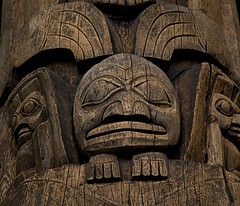Trees: The Future’s Favourite Building Material
Wood is gaining traction in the construction of multi-storey buildings as a green alternative to concrete and steel.
By Grace Kennedy, staff writer

Photo courtesy of Jovan Milosevic
In an unexpected nod to the past, British Columbia’s construction industry is starting to resemble its biome. Architects and construction companies are focusing on more sustainable practices. And the most sustainable building material? Not a futuristic substance stronger than concrete or steel, but one that’s already been used for centuries: wood.
But this is not like any wood building you’ve seen before.
“Home and buildings designers and planners have to think about both materials and the building regulations that are likely to appear in a world dominated by calls for action to cut carbon emissions,” Finance, an online financial reference, writes in its analysis of the construction industry.
“We are at the dawn of ‘smart’ buildings, which react both to energy usage and to the needs of occupants, but many leading architects and designers are already thinking about zero-emissions buildings, or massively taller buildings, or buildings that are themselves virtual ‘cities’—all concepts that will provide a fertile ground for innovation in building materials.”
The innovation of building materials has exploded in recent years, with buildings made from biological concrete, repurposed shipping containers, and bamboo. In British Columbia, and other places around the world, Mass Timber is the innovative material of choice.
Unlike The stereotypical wood building we’d all expect– some sort of glorified log cabin with solid beams of cedar or oak – Mass Timber uses laminated boards and plywood.
“In recent years the BC forest industry has been significantly affected by the pine beetle epidemic and mill curtailments,” writes the Michael Green, Vancouver-based architect, in his report “The Case for Tall Wood”.
“These issues require a shift in the way that we manage and harvest our forests, as well as in the way that we manufacture raw wood into value added product. [Mass Timber] panels can take advantage of lower grade lumber that otherwise would not be considered for structural uses.”
[pullquote]This is Mass Timber’s best asset as environmentally friendly construction option: it reduces waste in the lumber industry.[/pullquote]
Another reason that’s making advocates for Mass Timber, like Green, sing its praises? Currently the building industry produces about one-third of the world’s greenhouse gas emissions. According to the Canadian Wood Council’s report “Energy and the Environment in Residential Construction,” steel and concrete buildings can emit up to 29 per cent more greenhouse gases than wood buildings, and release between 10 and 12 per cent more air pollution. .
“In essence the production and transportation of concrete represents more than 5 times the carbon footprint of the airline industry as a whole,” the Tall Wood report states.
[pullquote]“It is clear that the very fundamentals of what materials we build our buildings with are worth re-evaluating.”[/pullquote]
Not only that, but using wood would help reduce emissions; trees act as carbon sinks, storing carbon during their growth and holding it for as long as they are structurally sound. But it’s not that simple–at the end of a building’s life, the wood may decompose or burn, releasing the pent up carbon into the atmosphere.
Additionally, supporters of Mass Timber stress it’s only a better option if the wood is harvested in a sustainable manner. People are worried about the sustainable forestry practices, even though groups such as the Canadian Wood Council cite United Nations’ documents stating that “Canada’s rate of deforestation is [virtually] zero and has been for over two decades,” and Canada retains about 91 per cent of its original forest.































Share the post "Trees: The Future’s Favourite Building Material"